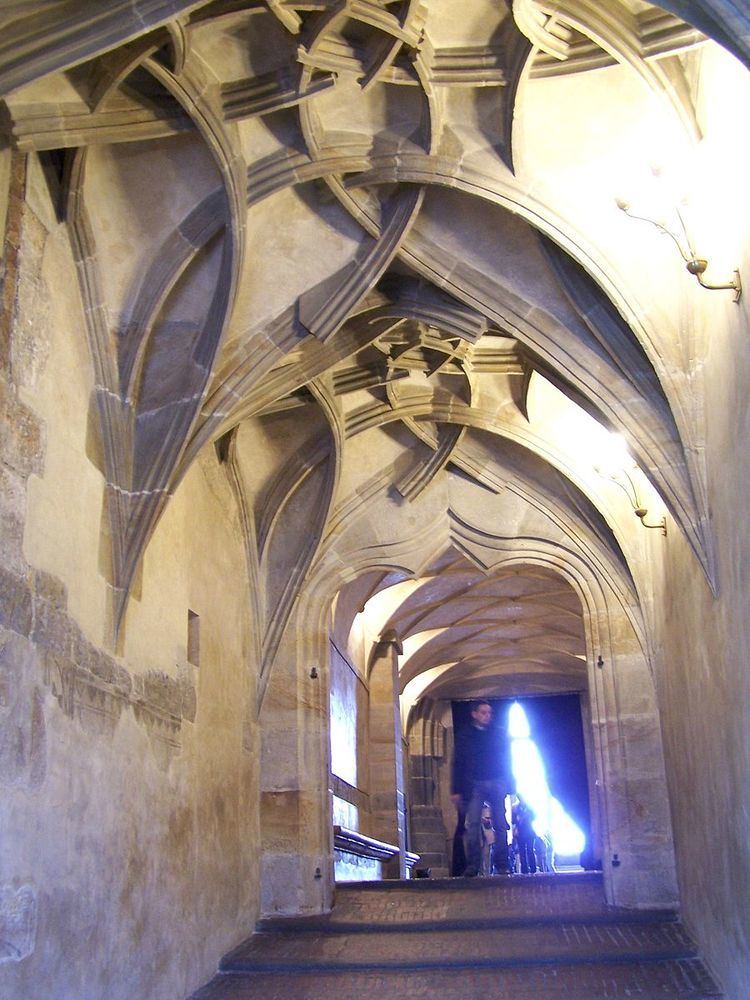 | ||
An equestrian staircase or riders' staircase is a very gently sloping flight of steps that can be negotiated by horses. Its origins may be seen in the mule staircases in steep terrain in open country.
Contents
Use in interior rooms
Its design principles found their way from road construction into building architecture. Here an equestrian staircase was a spiral, curved or repeatedly interrupted ramp within buildings, that had a gently sloped and a non-slip floor, either smooth or frequently divided by transverse ridges. This type of ramp occurs in the towers of churches, castles, fortifications and palaces as well as in the architecture of other buildings within fortifications villas and palaces.
Representation
From the 15th century, imposing equestrian staircases were built in the stately homes of the nobility. These staircases enabled riders to reach the upper floor on horseback. The equestrian staircase leading to Vladislav Hall in Prague Castle, which was built around 1500, is one of the oldest known examples.
Other equestrian staircases are found:
Stepless equestrian ramps
Occasionally ramps were built without any actual steps in order to enable horses to climb to the next floor. There are examples in Venice (St Mark's Campanile), Geneva (city hall) and Copenhagen (Round Tower).
